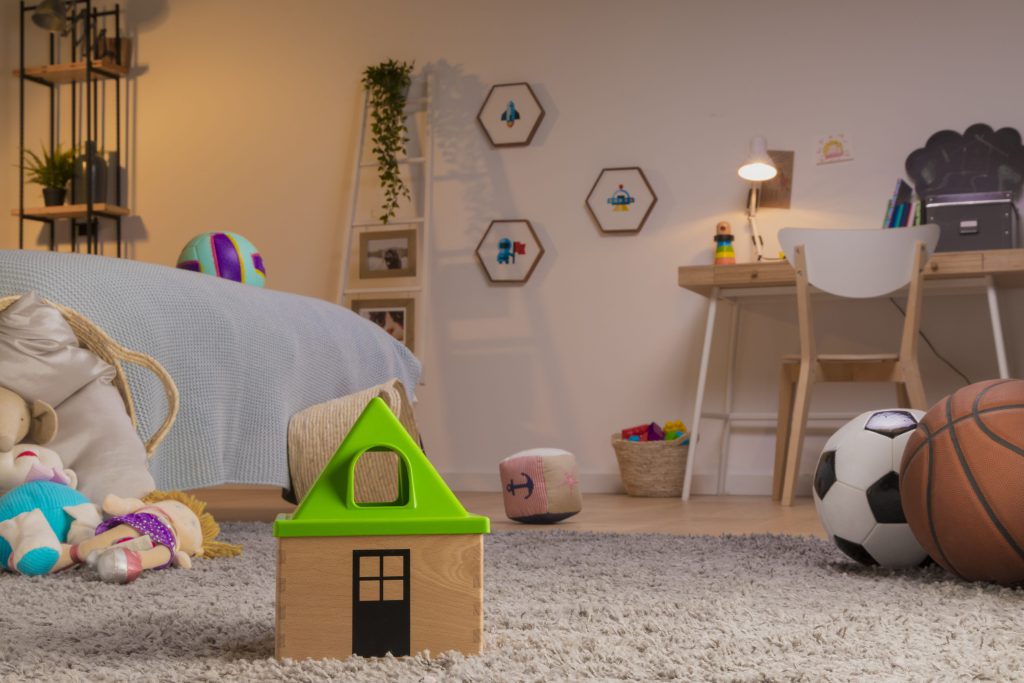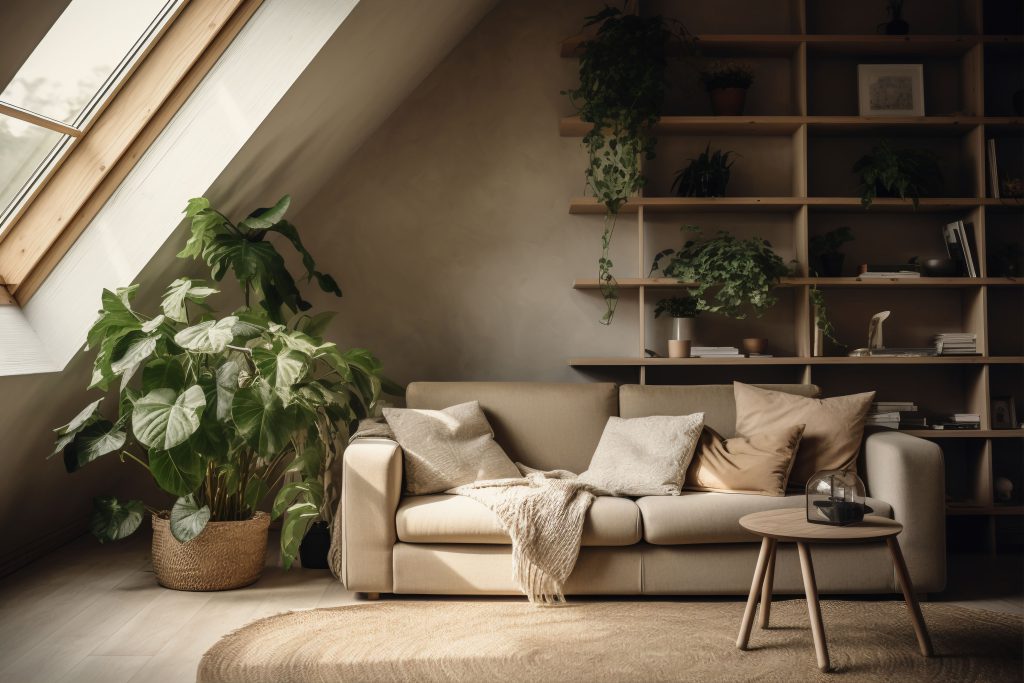Introduction
Colors profoundly impact a child’s mood and behavior within their bedroom environment. Dream Interiors, a reputed interior design firm in Coimbatore specializing in bedroom interior design for kids, emphasizes understanding children’s interests and preferences to create stylish and playful spaces. Here you can learn from the best bedroom interior designer in Coimbatore on how to shape your kid’s bedroom with colors and improve their mood.
Can Colour Change a Kid’s Mood?
Colors have a great impact on a child’s mood and behavior within their bedroom environment. Bharathi Interiors, a reputed interior design firm in Coimbatore specializing in bedroom interior design for kids, focuses on understanding children’s interests and preferences to create stylish and playful spaces.

5 Bedroom Colours To Shape Your Kid’s Mood
Curating the perfect color scheme is crucial for bedroom interior design in Coimbatore to positively influence a child’s mood. This article delves into warm, soothing, natural, and harmonious color palettes that can transform a kid’s room into a relaxing and inspiring haven. Here are 5 bedroom colors that can shape your kid’s mood.
Boost Your Child’s Mood With Warm Colours
Warm colors like yellow, orange, and red can create a cheerful and energetic atmosphere in a child’s bedroom. Orange is a bright and cheerful hue that promotes cooperation and confidence. However, it’s important to use these colors judiciously, as too much red can trigger aggression and difficulty focusing in some children.
- Yellow is an upbeat and sunny color that can improve concentration. However, excessive bright yellow may cause agitation and disrupt sleep.
- Red can be energizing, but it may also encourage aggressive behavior in children.
To strike the right balance, consider using warm brown tones like taupe and beige, which provide a sense of contentment and coziness. Accent these with pops of warm colours like:
| COLOUR | Yellow color is associated with emotions like happiness, excitement, originality, enthusiasm, confidence, hope, and creativity. |
| Yellow | Yellow colour is associated with emotions like happiness, excitement, originality, enthusiasm, confidence, hope, and creativity. |
| Coral or Pink | Coral symbolizes warmth, acceptance, positivity, and individuality. It is described as a welcoming, distinct, and outgoing colour that promotes optimism and strength. |
| Magenta | Magenta is known for its ability to evoke feelings of love, acceptance, and support, encouraging self-respect and contentment. This colour is linked to transformation, inspiring individuals to shed old patterns and embrace new ideas. |
| Light Orange | Light orange is associated with encouragement, self-confidence, and extroversion, making it a hue that radiates positivity and cheerfulness. This colour can symbolize rejuvenation, courage, and enthusiasm, offering a sense of renewal and vitality. |
By carefully selecting warm hues and balancing them with neutral tones, you can boost your child’s mood and create a vibrant, inviting space that fosters positivity and creativity.
Soothing colours for Kids’ Bedroom
Soothing colors like blue, green, and purple can create a calming and relaxing atmosphere in a child’s bedroom, promoting positive emotions, mindfulness, and good sleep. Green is particularly soothing and enhances reading ability. Blue is calming and reassuring but too much can be depressing.
The recommended color palette for the bedroom interior in Coimbatore for children’s bedrooms includes:
- Off-whites (e.g. cream, eggshell, ivory)
- Soft blues and light greens (e.g. sage, moss, faded mint)
- Faded lavenders and warm beiges
- Warm grays
When choosing colors, it’s advisable to go one or two shades lighter than desired, as paint often appears darker on the walls. Intense or bold colors like bright reds and deep purples should be avoided as they can be overstimulating.
| COLOUR | EFFECT |
| Lighter, warmer blues (periwinkle, sky blue) | Periwinkle symbolizes calmness, peace, and serenity, encouraging a tranquil environment and a clear, open mind. On the other hand, sky blue is associated with honesty, goodness, calmness, cleanliness, and peacefulness. |
| Light green | It symbolizes freshness, tranquillity, and balance, evoking feelings of renewal, growth, and harmony. Light green is often perceived as calming, refreshing, and soothing, creating a sense of relaxation and peace. |
| Paler shades of purple (lavender) | Lavender, a soft and light shade of purple, represents femininity, romance, and calmness. It signifies refinement, grace, and tranquillity, creating a sense of relaxation and peace. |
| White | White is a colour that symbolizes purity, innocence, cleanliness, and safety in Western culture. It represents new beginnings, simplicity, and equality. |
The goal of the best bedroom interior designer in Coimbatore is to create a comfortable, safe, and serene space that encourages positive emotions and healthy sleep patterns in children. Soothing colour schemes reduce anxiety, and overstimulation, and promote tranquillity, relaxation, and learning.
Natural Palette, Vibrant Accents: Perfect Contrast

Using a natural palette with vibrant accents is an effective way to design kids’ bedrooms. Combining a natural palette of browns, beiges, and tans with vibrant-coloured furniture and accents can create a lively and engaging space. However, it’s important to strike a balance, as dark shades can hinder mindfulness and have a more negative association, while bright, vibrant colors are better suited for playrooms rather than bedroom interior design in Coimbatore.
For nature lovers, a color scheme inspired by the outdoors can be ideal. Incorporate nature-inspired greens, browns, and earthy tones. Pair these with vibrant accents like
| COLOUR | EFFECT |
| Bright yellow | Bright yellow is a colour associated with a range of emotions and characteristics. It symbolizes happiness, joy, energy, and optimism. It is often linked to the sun, representing warmth, light, and positivity. |
| Vibrant blue | It symbolizes freshness, tranquillity, and balance, evoking feelings of renewal, growth, and harmony. Light green is often perceived as calming, refreshing, and soothing, creating a sense of relaxation and peace. |
| Pops of red | Lavender, a soft and light shade of purple, represents femininity, romance, and calmness. It signifies refinement, grace, and tranquillity, creating a sense of relaxation and peace. |
Layering in neutral tones and soft textures can help balance out the effects of warm or cool colours. Avoid busy patterns and strong, bright colours in children’s rooms as they can lead to hyperactivity, lack of sleep, and restlessness. Brown is a stable and grounding colour, but it can make a room feel smaller, so use it whenever needed.
Bedroom interior designers in Coimbatore can create a harmonious blend of natural hues with vibrant accents, ensuring the space remains calming and conducive to rest while still allowing for playful elements that stimulate creativity and joy. By carefully curating the colour palette, you can design a bedroom that nurtures your child’s well-being and inspires their imagination.
Transform Your Kid’s Room With Harmonious Colours

Harmonious colours like white, ivory, and brown can evoke a sense of peace and stability and can be combined with other hues to create a calming environment for children’s rooms. Including your child in the design process, even young children as young as 2 years old, can help incorporate their favorite colours. However, for nurseries, it’s advisable to focus more on creating a warm, safe, and special feeling rather than just the child’s preferences.
When selecting a colour scheme, consider longevity and the ability to transition as the child grows, rather than having to redo the room in a few years. A neutral base colour on three walls, with one focal wall in a fun accent colour, can make it easier to update the room later. Ensure the colour scheme flows with the overall style of your home.
Some popular colour combinations from the best bedroom interior designer from Coimbatore for children’s rooms include:
| COLOUR | EFFECT |
| Orange | The colour orange evokes warmth, confidence, and fun, combining the energy of red with the happiness of yellow. This vibrant hue symbolizes optimism, adventure, and enthusiasm, inspiring creativity and socialization |
| Pale pink | Pale pink, a soft and gentle hue, is associated with compassion, nurturing, and love, reflecting qualities of unconditional love, understanding, and tenderness. It exudes warmth, hope, and a calming effect, making it ideal for creating a sense of comfort and emotional reassurance. |
| Soft green | Soft green, a gentle and calming hue, is associated with intelligence, trust, and serenity, embodying qualities of reflection, loyalty, and reliability. This colour promotes a sense of duty, logic, and contemplation, fostering feelings of stability and wisdom |
| Gold | Gold symbolizes luxury, success, achievement, and royalty, embodying generosity, compassion, divinity, and power. This colour is associated with higher ideals, wisdom, and enlightenment, reflecting generosity, compassion, and love while adding richness and warmth to its surroundings. |
| Red | Red is a bold and fiery colour symbolizing heat, passion and love. It also conveys joy and good fortune in Asian countries. This vibrant hue is often used to embody passion and hard work, creating a sense of energy and determination. |
When choosing colours, go one or two shades lighter than desired, as paint often appears darker on the walls. Combining complementary, calming colours in layers or accents can create a harmonious, serene environment.
Pastel Palette For Kid’s Room: Relax And Focus
Pastel shades like pink, peach, and mint can provide a relaxing and focused environment, ideal for studying. However, it’s crucial to strike the right balance, as too much of certain colours can have undesired effects. When selecting a pastel palette for a child’s room, consider the following from the bedroom interior designers in Coimbatore.
| COLOUR | EFFECT |
| Soft pink | Soft pink symbolizes compassion, tenderness, and love, embodying warmth, hope, and a calming effect. This colour conveys a sense of tranquillity, care, and emotional well-being, fostering a nurturing and loving environment. |
| Mint green | Mint green, a refreshing and invigorating hue, evokes feelings of vitality, rejuvenation, and a connection to the outdoors, symbolizing growth, wellness, and fertility. People who favour mint green are often creative, open-minded, and nature lovers with a high IQ, known for their calm, patient, and understanding nature. |
| Pale blue | Pale blue, a soft and serene hue, embodies tranquillity, peace, and clarity, evoking feelings of calmness and relaxation. This colour can create a sense of serenity and clarity, often linked to the sky or water, offering a feeling of openness and freedom. |
| lavender | Lavender, a colour associated with elegance and sophistication, inspires feelings of reflection, romance, and luxury, evoking a sense of nobility. This colour is linked to intuition, sensitivity, and compassion, appealing to dreamers and idealists with a unique sense of style. |
Incorporate pastel accents through bedding, curtains, and decor, while keeping the overall palette balanced and serene. By carefully curating the pastel colour scheme, you can design a bedroom that nurtures your child’s well-being and supports their academic pursuits.
Conclusion
Ultimately, designing a child’s bedroom is not just about aesthetics; it’s about creating a sanctuary that supports their emotional and cognitive development. By incorporating the right colours and balancing vibrant accents with calming neutrals, parents can foster an atmosphere that nurtures their child’s growth and cultivates a love for their personal space. Bharathi Interiors’ expertise in bedroom interior design for kids in Coimbatore will help you craft personalized spaces that cater to each child’s unique interests and preferences.

